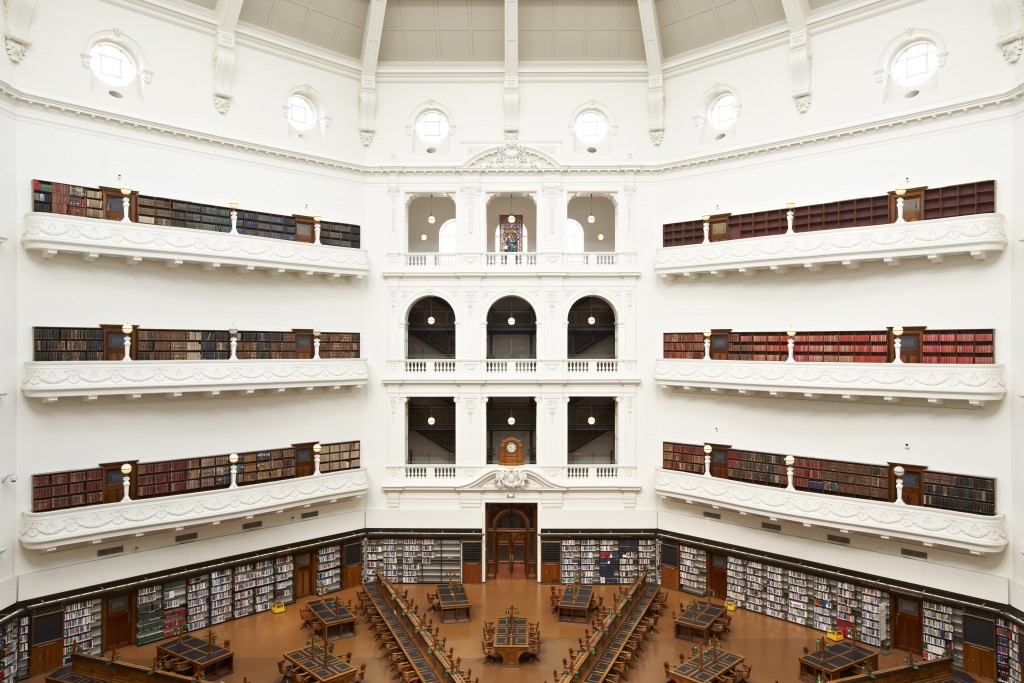
Have you ever visited the 6th floor of the La Trobe Reading Room and gazed out over the Dome? Did you notice the Bard of Avon peering over your shoulder?
The Shakespeare Window is one of the earliest stained-glass windows made in Melbourne. Bequeathed to the Library in 1960 by Miss Lucy Coppin, it was commissioned by her father, George Coppin (1819-1906) for the facade of the new Apollo Music Hall in Bourke Street, which opened in July 1862.
The three metre portrait displays the text All the world’s a stage, a quotation from As You Like It, and the beginning of the famous speech describing the seven ages of man.
“All the world’s a stage, And all the men and women merely players; They have their exits and their entrances, And one man in his time plays many parts, His acts being seven ages.”
The window is based on a sculpture by London-based French sculptor Louis François Roubiliac (1702-1762), commissioned by David Garrick, and now held at the British Library. It was originally flanked by two smaller windows, which depicted the Shakespearian characters Hamlet, Lady Macbeth and Beatrice.
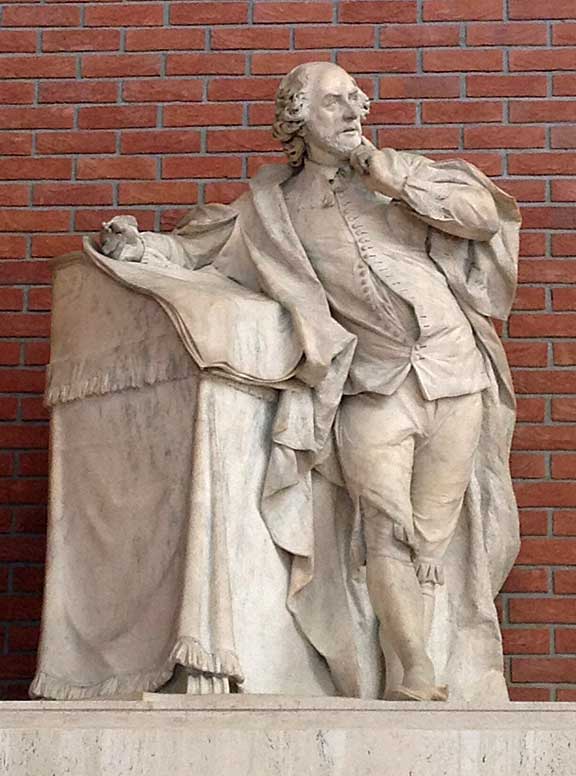
The Shakespeare sculpture at the British Library. Photo credit: Jennifer Howes
It was one of the very first stained-glass windows produced by the partnership of James Ferguson and James Urie. Beginning in the 1850s as plumbers in North Melbourne, by the 1860s the pair had expanded into painting and decorating. At their peak they kept offices on Collins Street, and in 1875 they won two prizes for their stained glass at the Intercolonial Exhibition in Melbourne. Local production of stained glass was a risky business however, and competition from much larger British and German studios and the crash of the 90s finally saw Ferguson and Urie close in 1899.
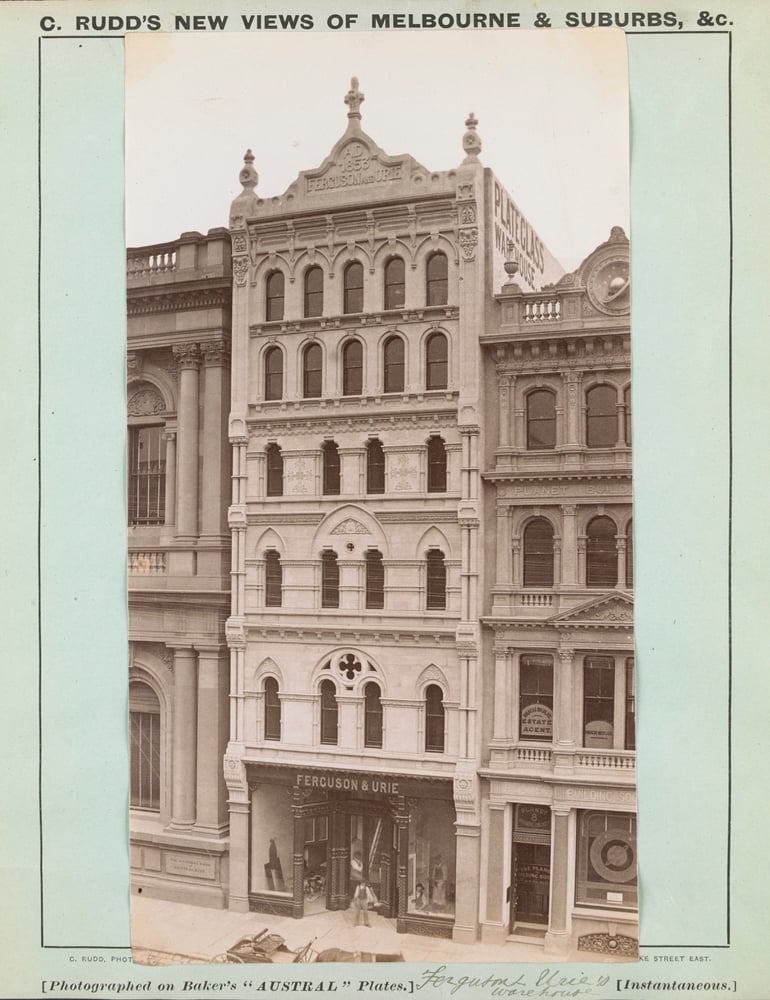
Ferguson & Urie’s warehouse [10 Collins Street] 1886-87. Photo by: Charles Rudd; H39357/128
In its many moves the window was damaged and whole pieces of glass were destroyed. It was extensively restored in 2005 by stained-glass artist Geoffrey Wallace, and installed in the La Trobe Reading Room. And so from the sixth floor of our grand Dome, this brightly coloured Bard of Avon watches over Victoria’s readers, writers, thinkers and dreamers.
“Come, and take choice of all my library, And so beguile thy sorrow.”
Titus Andronicus, Act IV, scene I
Read more about the Shakespeare Window’s history in this La Trobe Journal article by Mimi Colligan.

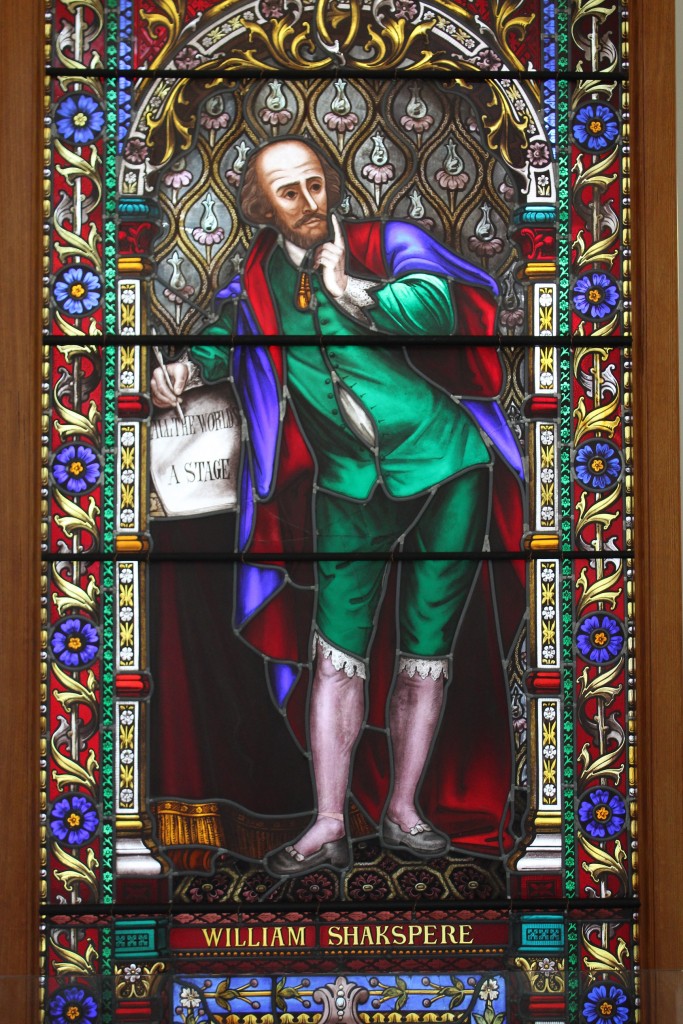
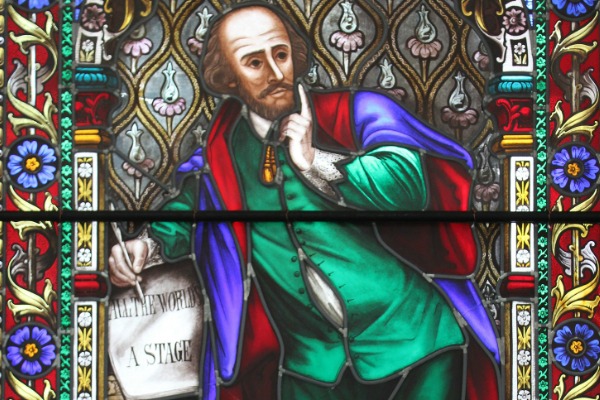

Thanks for this very interesting article, Sarah. It reminds me of the stained glass windows in the Great Hall at Brisbane Grammar School, also by Ferguson and Urie, which include a portrait of Shakespeare among other famous Englishmen.
https://www.brisbanegrammar.com/OurCommunity/Giving@Grammar/Documents/Grammar_GreatHall_Booklet2010_final.pdf
(see page 4 for a description of the BGS windows)
Thanks for an interesting insight. I live in Adelaide and usually visit SLV on my annual visit to Melbourne. Last year I saw the wonderful ST Gill exhibition. This year I’ll definitely be looking up The Bard. Thanks for keeping me informed about one of Australia’s great cultural assets.
Fantastic thorough info Sarah,! cheers Isabel (Tour Guide)…
Thanks for the fine photo and account of the glassmakers. With its Victorian and Edwardian city and domestic buildings, this city should be a hive of glassmakers. But the course where my daughter studied architectural glass making and restoration (Monash-Chisholm) has now closed, like many other avenues to learning fine specialised art work. An educational gap which threatens the survival of Victoria’s fine glass.
Pingback: Back in Melbourne: 7. State Library of Victoria – You Are Doing WHAT!?
Why is Shakespeare misspelled?
Hi Golnar,
The name ‘Shakespeare’ was spelt many diffrent ways throughout his lifetime- indeed the Library holds many published works where the author is listed as ‘Shakspere’, such as “The two noble kinsmen” / by William Shakspere and John Fletcher.
Wikipedia has a good explanation, ‘The spelling of William Shakespeare’s name has varied over time. It was not consistently spelled any single way during his lifetime, in manuscript or in printed form. After his death the name was spelled variously by editors of his work, and the spelling was not fixed until well into the 20th century.’
https://en.wikipedia.org/wiki/Spelling_of_Shakespeare%27s_name
Paul